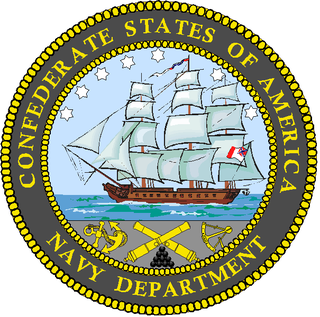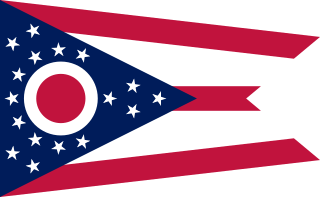 W
WThe United States Military Academy (USMA) is an undergraduate college in West Point, New York that educates and commissions officers for the United States Army. Confederate President Jefferson Davis, himself a former officer and West Point graduate, preferred West Point trained officers for the Confederate States Army (CSA). This article lists those alumni. Also included are a number of officers who were cadets at West Point but for reason known or unknown never graduated, such as Lewis Armistead. There are several (indicated) familial relations between the officers, e.g. between members of the Lee family of Virginia. Other notable Confederate officers include James Longstreet, Stonewall Jackson, and J.E.B. Stuart.
 W
WThe United States Military Academy (USMA) is an undergraduate college in West Point, New York that educates and commissions officers for the United States Army during the American Civil War. This list is drawn from alumni of the Military Academy who served as general officers in the Union Army. This includes William Tecumseh Sherman, Abner Doubleday, Ulysses S. Grant, George Crook, Philip Sheridan. This also includes six recipients of the Medal of Honor: Rufus Saxton, Eugene Asa Carr, John Schofield, Oliver O. Howard, Alexander S. Webb, and Adelbert Ames.
 W
WBattles of the American Civil War were fought between April 12, 1861 and May 12–13, 1865 in 24 states, the District of Columbia, as well as the following territories: Arizona Territory, Colorado Territory, Dakota Territory, Indian Territory, New Mexico Territory, and Washington Territory, and naval engagements. These battles would change the standing and historical memory of the United States. While the origins of the war are complex, principal among them were the issue of slavery, and the interpretations of the Constitution and the rules, rights, and qualifications that it embodied.
 W
WThe following engagements took place in the year 1863 during the American Civil War. During the year, Union forces captured the Confederate cities of Vicksburg and Port Hudson, giving them complete control over the Mississippi River, while forcing Confederates out of the North following the Battle of Gettysburg.
 W
WThis article contains the list of battles with most United States military fatalities, in terms of American deaths.
 W
WThis is a list of Confederate arsenals and armories. The Confederate States of America was a government set up from 1861 to 1865 by eleven Southern slave states that had declared their secession from the United States. The Confederate States Army was the army of the Confederate States of America while the Confederacy existed during the American Civil War. Arsenals and armories in this list were active during the years of the confederacy and during the American Civil War.
 W
WThis listing shows the names and ranks of some of the Regular Army of the Confederate States of America (ACSA) officers. It does not include *general officers. These officers fought for the Confederate States of America during the American Civil War. This list also shows the final rank and unit of the Provisional Army of the Confederate States (PACS) served in, if known.
 W
WThis is a list of ships of the Confederate States Navy (CSN), used by the Confederate States of America during the American Civil War between 1861 and 1865. Included are some types of civilian vessels, such as blockade runners, steamboats, and privateers which contributed to the war efforts by the CSN. Also included are special types of floating batteries and harbor defense craft.
 W
WThe general officers of the Confederate States Army (CSA) were the senior military leaders of the Confederacy during the American Civil War of 1861–1865. They were often former officers from the United States Army prior to the Civil War, while others were given the rank based on merit or when necessity demanded. Most Confederate generals needed confirmation from the Confederate Congress, much like prospective generals in the modern U.S. armed forces.
 W
W W
WThe Medal of Honor was first awarded in the American Civil War. President Abraham Lincoln signed a bill containing a provision for the medal for the Navy on December 21, 1861. It was "to be bestowed upon such petty officers, seamen, landsmen, and Marines as shall most distinguish themselves by their gallantry and other seamanlike qualities during the present war." Legislation to include the Army was signed into law on July 12, 1862.
 W
WThis is a complete alphabetical list of Medal of Honor recipients during the Civil War. Many of the awards during the Civil War were for capturing or saving regimental flags. During the Civil War, regimental flags served as the rallying point for the unit, and guided the unit's movements. Loss of the flag could greatly disrupt a unit, and could have a greater effect than the death of the commanding officer.
 W
WThis is a complete alphabetical list of Medal of Honor recipients during the Civil War. Many of the awards during the Civil War were for capturing or saving regimental flags. During the Civil War, regimental flags served as the rallying point for the unit, and guided the unit's movements. Loss of the flag could greatly disrupt a unit, and could have a greater effect than the death of the commanding officer.
 W
WThis is a complete alphabetical list of Medal of Honor recipients during the Civil War. Many of the awards during the Civil War were for capturing or saving regimental flags. During the Civil War, regimental flags served as the rallying point for the unit, and guided the unit's movements. Loss of the flag could greatly disrupt a unit, and could have a greater effect than the death of the commanding officer.
 W
WThe Medal of Honor is the highest military decoration awarded by the United States government and is bestowed on a member of the United States armed forces who distinguishes himself "…conspicuously by gallantry and intrepidity at the risk of his life above and beyond the call of duty while engaged in an action against an enemy of the United States…" Due to the nature of this medal, it is commonly presented posthumously.
 W
WThis is a complete alphabetical list of Medal of Honor recipients during the Civil War. Many of the awards during the Civil War were for capturing or saving regimental flags. During the Civil War, regimental flags served as the rallying point for the unit, and guided the unit's movements. Loss of the flag could greatly disrupt a unit, and could have a greater effect than the death of the commanding officer.
 W
WThe Battle of Cedar Creek was fought near Middletown, Virginia on October 19, 1864. The battle was the decisive engagement of Major General Philip Sheridan’s Valley Campaigns of 1864 and was the largest battle fought in the Shenandoah Valley. Twelve Union Army enlisted men and nine officers were awarded the Medal of Honor for gallantry during the battle.
 W
WThe Gettysburg Campaign was a campaign of the American Civil War. The Union and Confederate forces fought between June 3 and July 24 in southern Pennsylvania, Maryland, and northern Virginia. The main and namesake battle of the campaign was the Battle of Gettysburg, which was fought from July 1 to July 3 in and around the town of Gettysburg, Pennsylvania. The battle involved the largest number of casualties of the entire war and is often described as a turning point of the civil war. The Medal of Honor was awarded to 73 Union soldiers for 7 different actions of the campaign.
 W
WThe Second Battle of Fort Fisher was a joint assault by Union Army and naval forces against the Confederate Fort Fisher, outside Wilmington, North Carolina, near the end of the American Civil War. Sometimes referred to as the "Gibraltar of the South" and the last major coastal stronghold of the Confederacy, Fort Fisher had tremendous strategic value during the war. The Medal of Honor was awarded to 54 Union servicemen for their actions during this battle.
 W
WThe Third Battle of Winchester or Battle of Opequon, was fought in Winchester, Virginia, on September 19, 1864, during the Valley Campaigns of 1864 in the American Civil War. Fourteen Union Army enlisted men and one officer were awarded the Medal of Honor for gallantry during the battle.
 W
WThe following is a list of the memorials to Jefferson Davis, President of the Confederate States of America.
 W
WThe following is a list of memorials to and things named in honor of Stonewall Jackson (1824–1863), who served as a general in the Confederate States Army during the American Civil War of 1861-1865.
 W
WAbraham Lincoln, 16th President of the United States from 1861 to 1865, has been memorialized in many town, city, and county names, Along with George Washington, he is an iconic image of American democracy and American nationalism.
 W
WSee also Ohio in the American Civil War
 W
WThis timeline of events leading to the American Civil War is a chronologically ordered list of events and issues which historians recognize as origins and causes of the American Civil War. These events are roughly divided into two periods: the first encompasses the gradual build-up over many decades of the numerous social, economic, and political issues that ultimately contributed to the war's outbreak, and the second encompasses the five-month span following the election of Abraham Lincoln as President of the United States in 1860 and culminating in the capture of Fort Sumter in April 1861.
 W
WThe American Civil War, fought between the Union and Confederate forces, took place from 1861 to 1865. During the war, a variety of weapons were used on both sides. These weapons include edged weapons such as knives, swords, and bayonets, firearms such as rifled muskets, breech loaders and repeating weapons, various artillery such as field guns and siege guns and new weapons such as the early grenade and landmine.